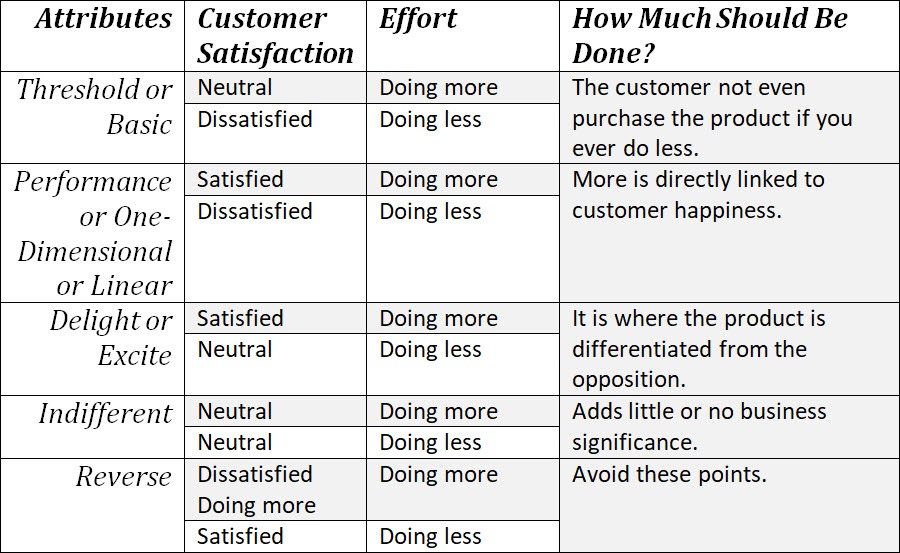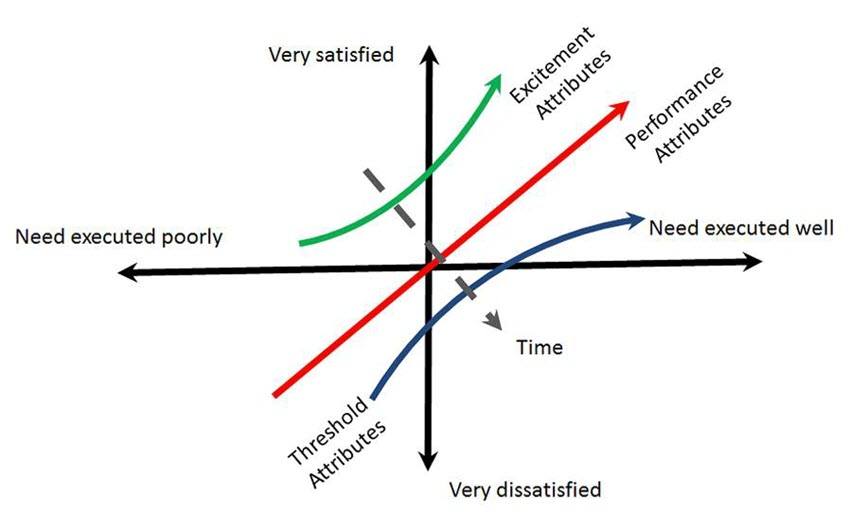Who Introduced The Kano Model
In 1984, Japanese researcher and consultant, Noriaki Kano published a paper with a set of techniques and ideas that help us in impelling our customers and prospects satisfaction and product development. Those techniques and ideas are commonly known as the Kano Model.
Kano, the professor of quality management, says that a product or service is about more than functionality. Other than just functionality, it is about customers’ emotions. For instance, a car driver expects a car to stop when hitting the brakes, but many will be pleased because of its ignition sound and extraordinary speed acceleration and control over it.
What Is Kano Model
The Kano model raises your spirits and makes you think about how your services and products related to your customers’ requirements while moving from “More Is Better” methodology to product development to a “Less Is More” line of attack.
Keep adding and coming up with new features in a product or service can be expensive. It may also just add the complications without bolstering the customer satisfaction. Whereas, if you only add one particular feature that can delight and fulfill the need of your customer. Then ultimately it will cost significantly less and increase your sales at the same time.
Kano Analysis and the Five Pillars
The Kano analysis defines the link between the realization of customer requirements/needs and customer satisfaction. Noriaki Kano established a model, and it is found on five pillars of customer satisfaction. All five are described below
- Threshold Attributes
- Performance attributes
- Excitement attributes
- Indifferent qualities
- Reverse qualities
Threshold Attributes
It must be qualities. Organizations take these characteristics for granted when satisfied, but the outcome is dissatisfaction when not fulfilled. The prospects and customers view them as a basic. It is not likely that customers will tell the company about it precisely when asked about these attributes because they expect and see as basics. For instance TV channel search and customizable ringtones.
Performance Attributes
They are one-dimensional qualities. The outcome of these attributes is satisfied if the company fulfills it and results in dissatisfaction if not fulfilled. Customers speak about these traits and businesses compete on these attributes. The customer satisfaction will excel and increase according to it. For example smartphones battery life and resolution of their display.
Excitement Attributes
Basically, these are attractive qualities of the company. If they are not fulfilled then they do not cause the dissatisfaction. If achieved, they will provide satisfaction. They are unspoken often, and customers do not expect them usually. For example pay through a smartphone and online access through the TV.
Indifferent Qualities
They are neither good nor bad. They do not have any impact on customer satisfaction neither positive nor negative. For instance: More than 1000 channels on a TV, emoticons on messaging apps.
Reverse Quality
If they exist, then they will lead customers to dissatisfaction. If they do not exist then they do take customers to satisfaction level. For instance: Rust on the car wheel rims or showing apps when changing channels.
How to Use Kano Analysis
We talk about the two approaches above, one is “More Is Better”, and another is “Less Is More.” Now let’s analyze through a chart how companies can use Kano analysis to satisfy the customers.

Another Use of Kano Model Is Surveys
After categorizing and identifying the features into the threshold, performance, excite, indifferent, and reverse a survey should be conducted to break down and to comprehend the customers’ needs and preferences.
An example of a survey question is listed below to make you understand.
Should we come up with a conventional LED screen instead of OLED to reduce the cost up to $100 of our upcoming smartphone model?
- I must have it
- I like it
- I can live with it
- I am neutral
- I dislike it






